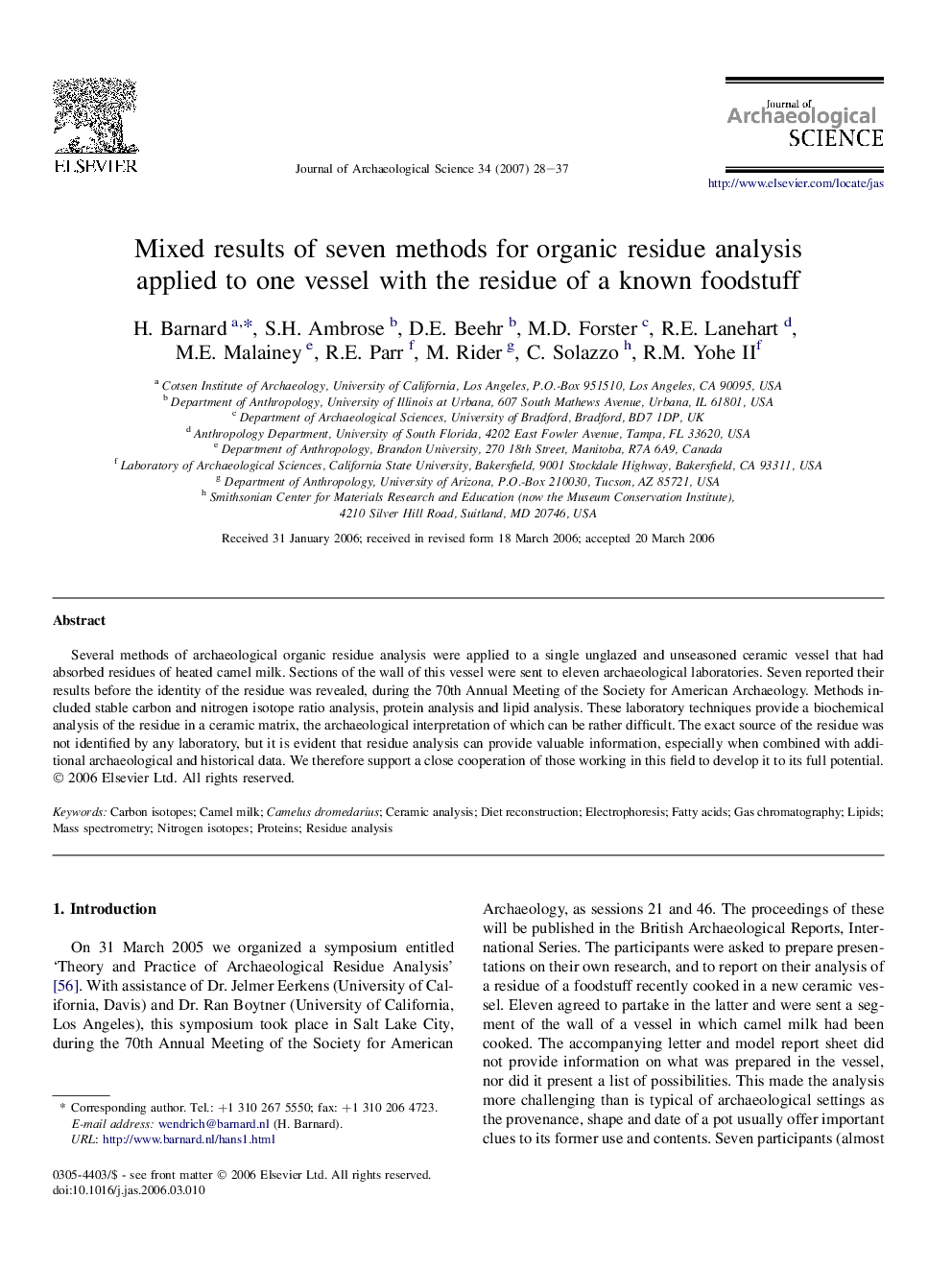| Article ID | Journal | Published Year | Pages | File Type |
|---|---|---|---|---|
| 1037756 | Journal of Archaeological Science | 2007 | 10 Pages |
Several methods of archaeological organic residue analysis were applied to a single unglazed and unseasoned ceramic vessel that had absorbed residues of heated camel milk. Sections of the wall of this vessel were sent to eleven archaeological laboratories. Seven reported their results before the identity of the residue was revealed, during the 70th Annual Meeting of the Society for American Archaeology. Methods included stable carbon and nitrogen isotope ratio analysis, protein analysis and lipid analysis. These laboratory techniques provide a biochemical analysis of the residue in a ceramic matrix, the archaeological interpretation of which can be rather difficult. The exact source of the residue was not identified by any laboratory, but it is evident that residue analysis can provide valuable information, especially when combined with additional archaeological and historical data. We therefore support a close cooperation of those working in this field to develop it to its full potential.
